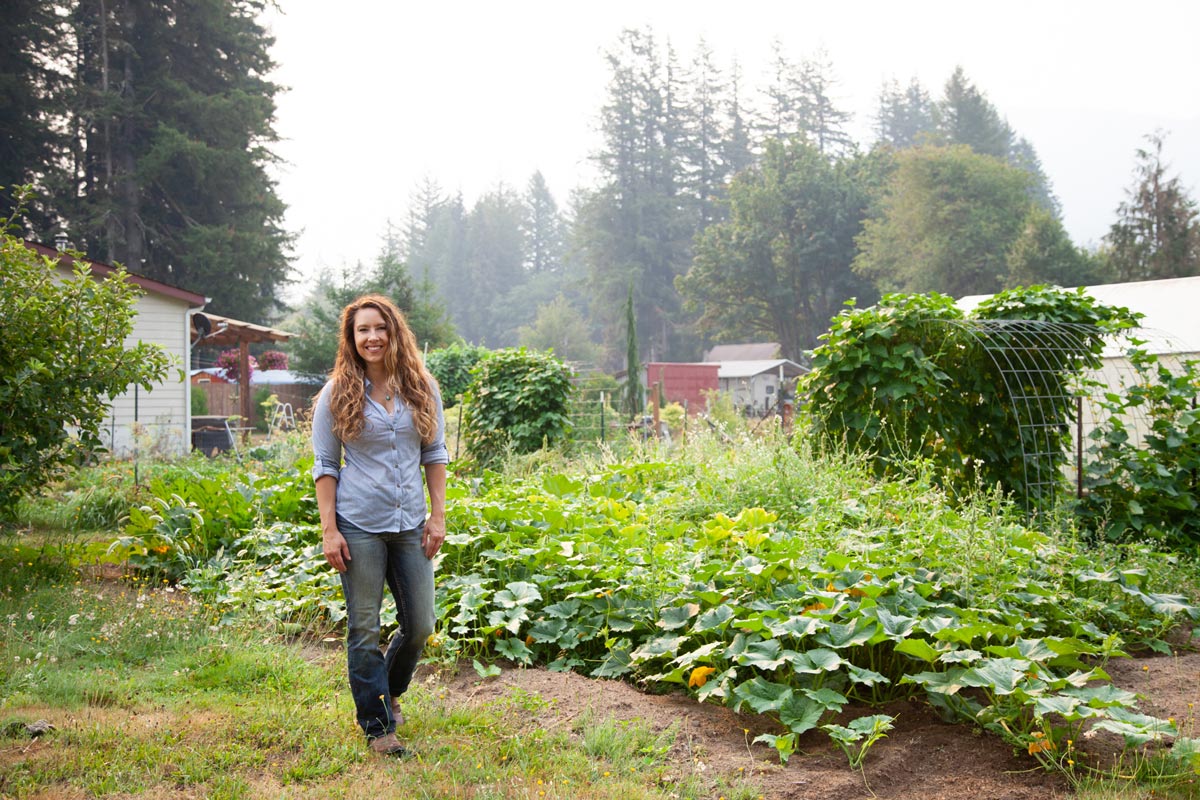So you want to grow a survival garden. But first off, what makes a garden a “survival garden” and how do we plant one? Plus, what are the crops we should focus on in our survival garden?

We will discuss survival gardening in today’s podcast (episode #386). We’ll talk about what it is, why it’s important, which crops I recommend growing, and the purpose of talking about this topic.
Table of Contents[Hide][Show]
What is a Survival Garden
A survival garden is a way to provide the majority or a large portion of the food your family is growing to survive.
Other people may call these “prepper gardens,” and sometimes they have a negative connotation. It’s unfortunate that these terms can cause fear and an overall negative mindset because just a few generations ago, our definition of a survival garden was just the way people lived.
However, with the industrialization of food, these backyard survival gardens started to disappear. And instead of the grocery stores supplementing gardens, backyard gardens now supplement the grocery store.

Why Gardening is Important
If you’re wondering why you should grow a garden when everything you need is readily available at the grocery store then I’m glad you’re here. There are many reasons why gardening is a better option…
- Home-grown food is fresher and generally tastes better.
- If you’re growing food in high-quality, nutrient-dense soil, your food will actually have more nutrients than those purchased at the grocery store.
- You’re picking food at the pique of ripeness. Grocery store food is picked long before it’s ripe and continues to ripen during shipping and once on the grocery store shelf.
- There are environmental benefits to growing a garden. Whether in an in-ground garden or even in pots or raised garden beds. You’re bringing in diversity for pollinators, insects, and more.
- The microorganisms in the soil act as an anti-depressant!
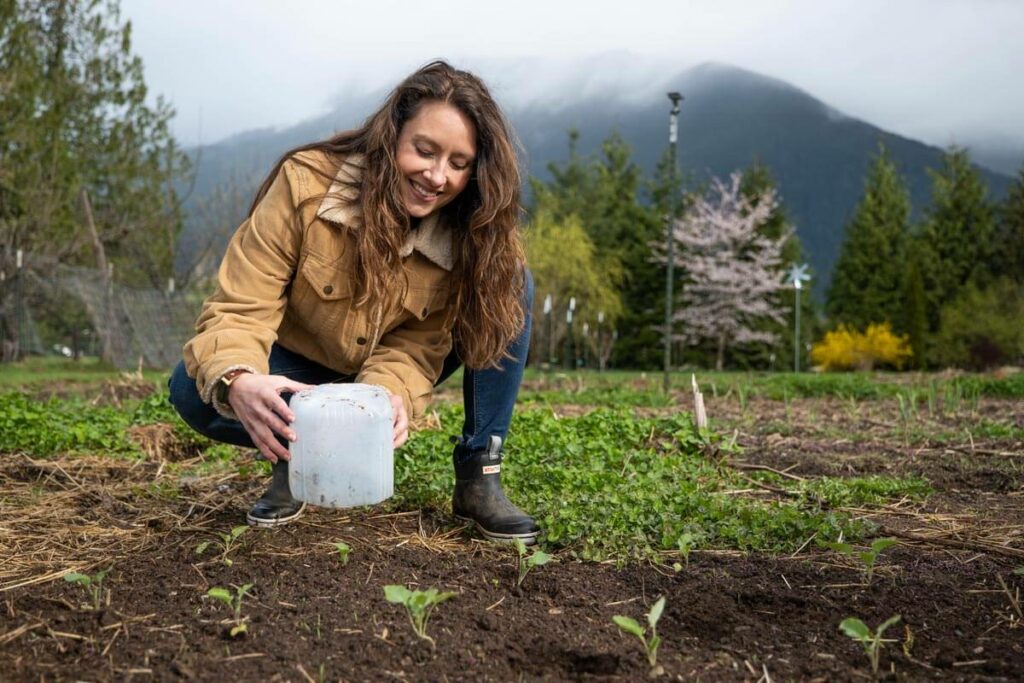
What Do I Need for a Survival Garden
If you’re looking to move more toward a “producer” mindset rather than a “consumer” mindset, it’s important to consider what’s needed to start a survival garden.
Location
Most vegetables will need at minimum 6+ hours of full sunlight. You’ll want to make sure your survival garden area gets at least some sun during the day.
If you want to grow some shade-loving plants, you can utilize those shady areas in your yard. But for the main survival garden area, 6+ hours of sunlight is ideal.
For more information on choosing the right garden location, read these helpful tips for the beginning gardener.
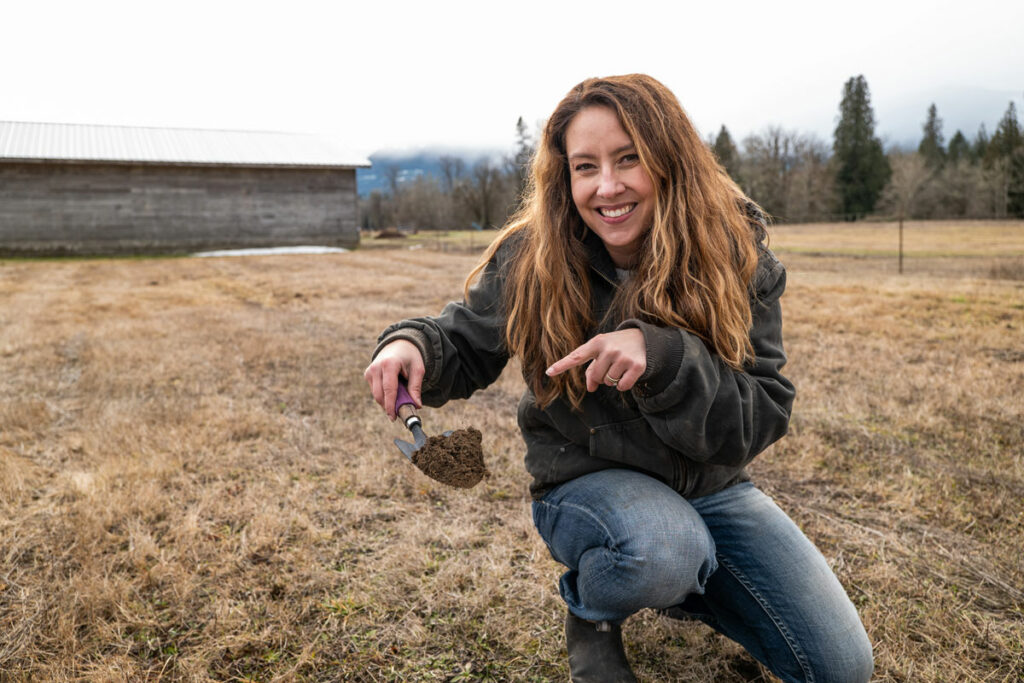
Soil
Healthy soil is imperative for growing a productive garden. If you want to learn more about building up healthy soil, check out some of the following blog posts:
- How to Improve Soil Health
- Sheet Mulching: The Easy Way to Build Soil
- Six Natural Fertilizers to Improve Soil
- 11 Tips to Improve Your Soil (in the Fall)
- How to Test Soil pH & Amend Acidic or Alkaline Soil
- Soil Remediation – How to Fix Tainted Soil
Crops
We’ll discuss more on what crops you should grow further down in this blog post, but for the sake of knowing what’s needed for a survival garden, you obviously need crops!
When choosing your crops, it’s important not only to choose the right crops but also the correct variety. Different onions, for example, will have a longer or shorter shelf life.
So if you choose a variety that has a short shelf-life, you may grow enough onions to feed your family for a year, but those onions won’t last a year in cold storage.

What are the Best Survival Foods to Grow
Growing crops that are calorie-dense with good storage or preservation capabilities are the best options for a survival garden.
Remember, we’re talking about survival and not necessarily pleasure.
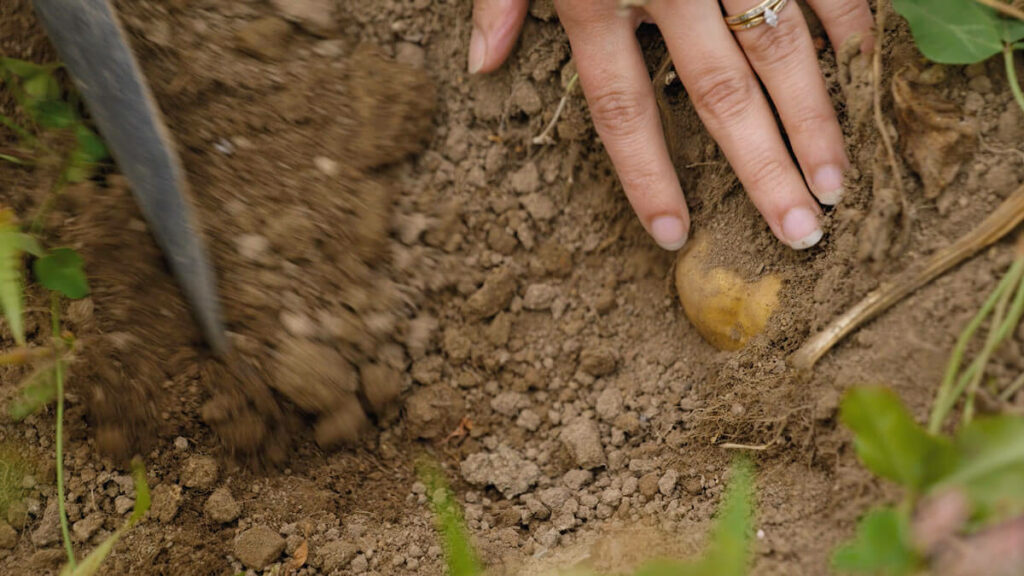
Potatoes
When you think about a potato, it can almost be a full meal on its own. You can cut it up and add it to soups and stews, you can make a hash, fry it, bake it, microwave it, etc.
Potatoes are also very calorie-dense, and most are a decent size, so you don’t need many to fill up a plate.
Per potato plant, you’ll get a fairly large yield (versus planting an onion, you only get one onion per plant). Depending on the size of the seed potato, you can get multiple plants from that one potato if you hill it up (indeterminant varieties only), and each plant generally produces upwards of 10 potatoes.
To learn more about growing potatoes, check out my post on planting potatoes and choosing the right varieties here.
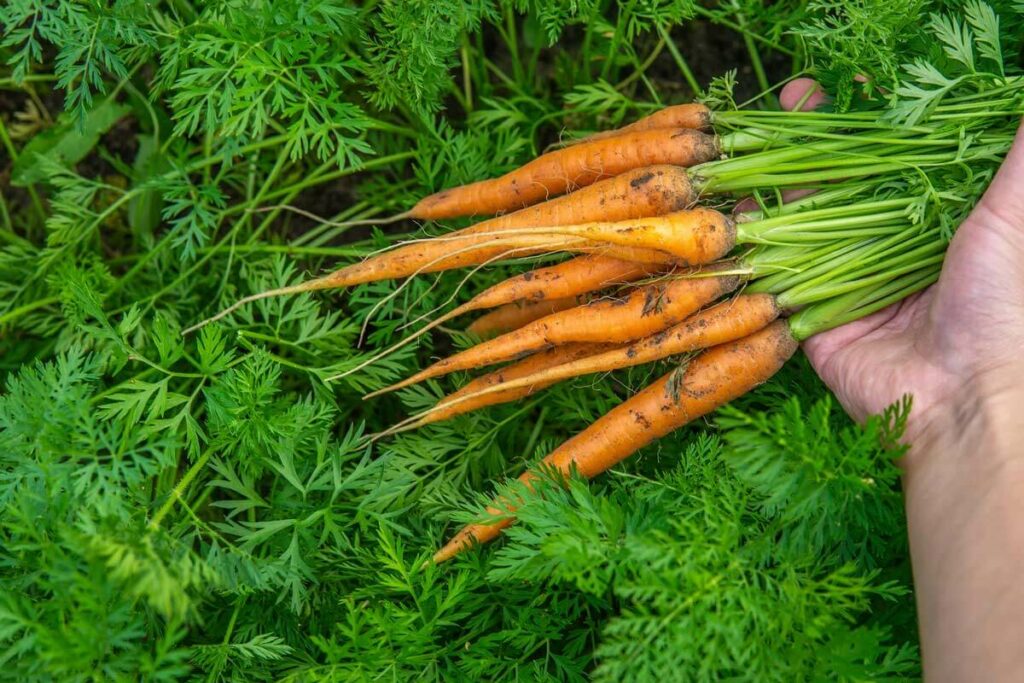
Carrots
Carrots are another root vegetable that is very nutrient-dense and also stores well. Parsnips are very similar to carrots and also store well. In fact, I store my potatoes and carrots in the garden all winter long! I live in the Pacific Northwest and we experience lows of 5 degrees F in the winter and can get up to two feet of snow covering the garden.
However, I’m able to harvest my potatoes and carrots well into the springtime and they’re perfectly good!
This may not be an option with your climate, however both potatoes and carrots are great storers, even without a root cellar.
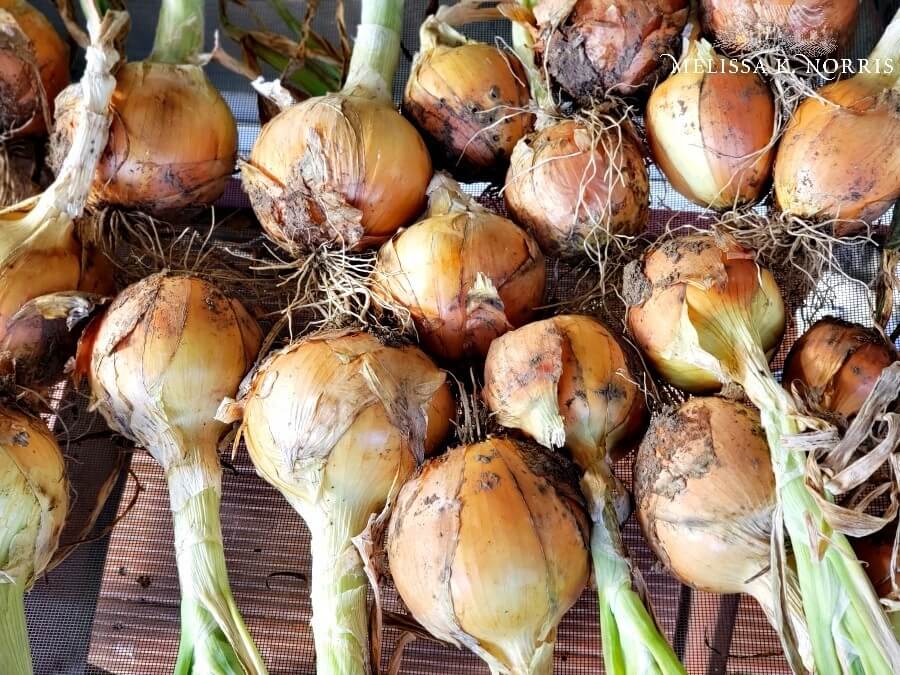
Onions & Garlic
Not only are onions and garlic fairly easy crops to grow and store, but they are power-houses when it comes to flavor.
Again, be sure to choose a good storage variety so your harvest lasts a long time in storage.
If I had to choose just four things to grow in a survival garden, it would be potatoes, carrots, onions and garlic. Think of all the amazing dishes you can make with these staples! They’re so versatile, calorie-dense, and nutrition-packed, and they don’t require any special forms of preservation.
You can also turn onions and garlic into homemade bone broth and homemade fire cider (a great medicinal remedy).
Root Vegetables
The other root vegetables that are great to grow would be something like radishes. Not only do they grow very quickly (they take about 30 days to mature), but you can also eat the radish greens, so you get a two-for-one crop.
Beets are also something you can eat the greens and the root. Check out this blog post for more information on planting and growing beets.
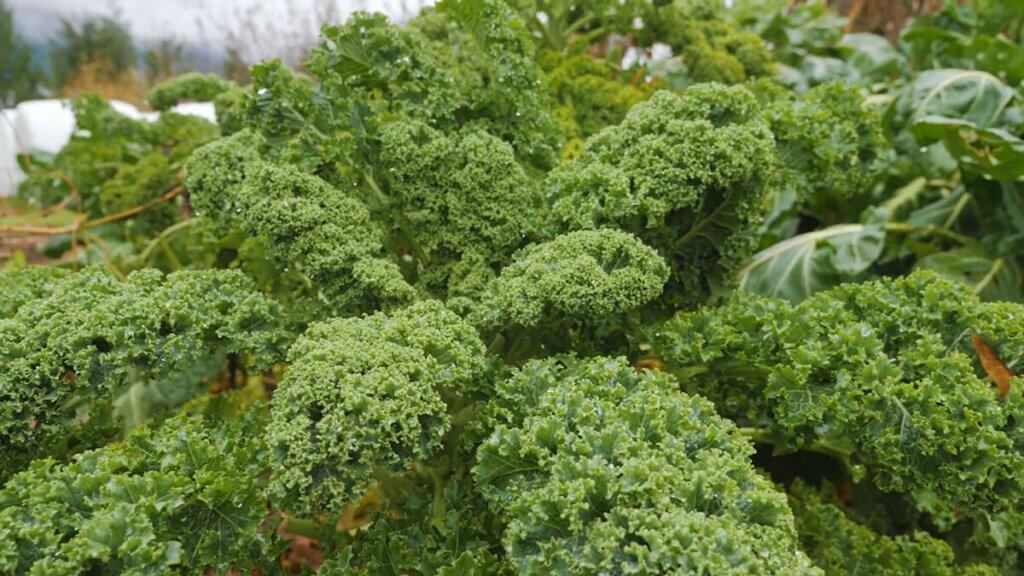
Kale
If you’re thinking about growing food in your survival garden year-round, you really should consider kale. Though many of us don’t like the flavor, kale that’s grown in the colder months actually tastes sweeter than summer-grown kale.
I can plant kale in the early spring. Because it’s a cool-weather crop, it will germinate (or grow) in colder temperatures. It’s one of my first crops to come up in the spring. It will grow all summer long (during the warmer months, if you can plant it in the shade, it does better… I grow mine in my bean tunnel so they’re shaded by the beans).
The kale will grow throughout the entire summer, and I’ll still be harvesting it well into the winter. At the end of the winter, we’ll pull up the plants and start fresh in the spring.
Spinach is also great, but it does tend to bolt once the weather gets warm.
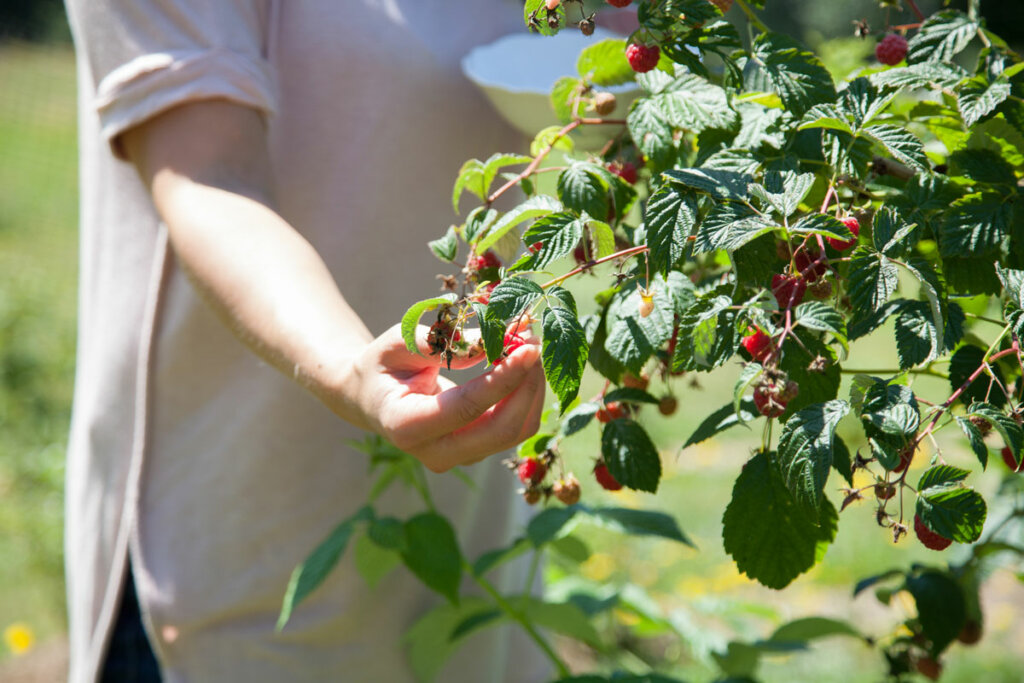
Berry Bushes
Though berry bushes aren’t something you’ll be able to plant now and get a harvest the same year (autumn-bearing raspberry bushes are the only exception), they are a perennial that will continue to grow and produce for you year after year.
Getting these bushes in the ground now means in years to come, you’ll be able to harvest the fruit. Depending on how many bushes you plant, you could grow enough fruit for an entire year!
Read this post to learn how many fruit and berry bushes to plant per person.
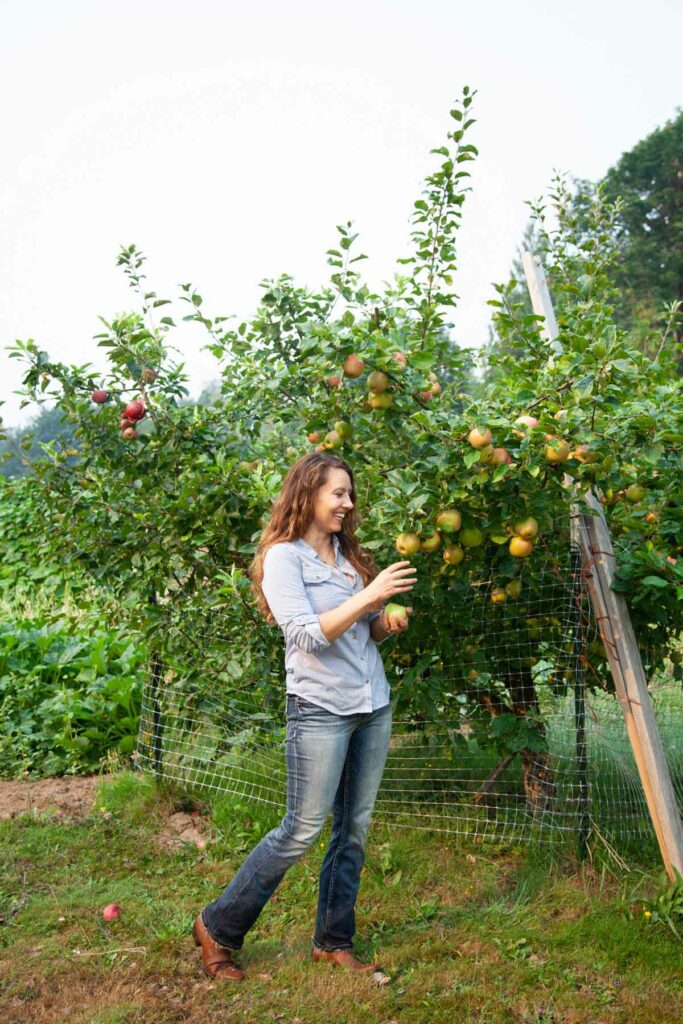
Fruit Trees
In the same way getting berry bushes planted right away, you’ll also want to consider fruit trees. There are storage varieties of apples that will store for a year or longer!
Check out this podcast on historical varieties of apple trees here.
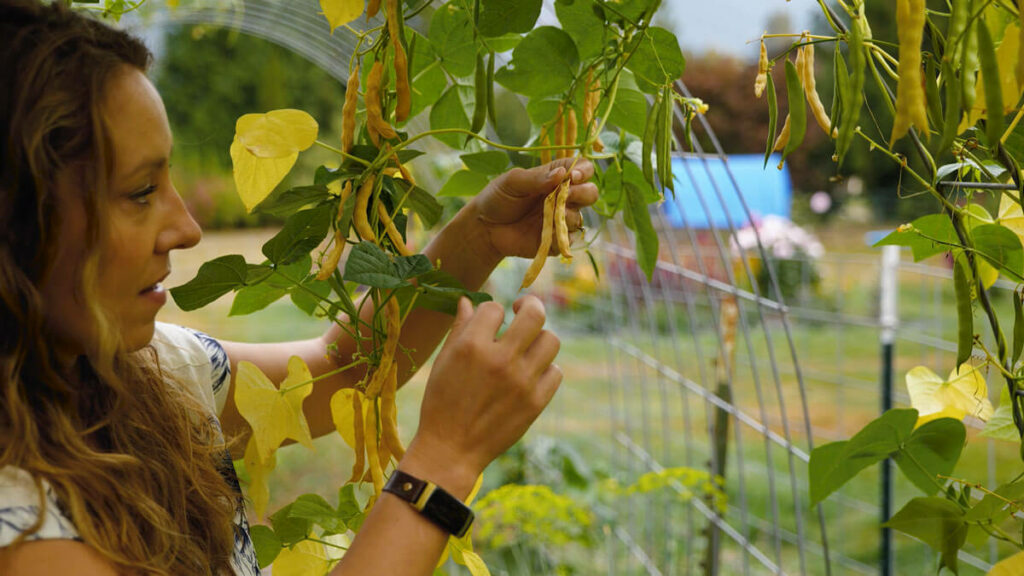
Legumes
Beans and legumes are another great crop to grow because, especially if you grow pole beans, they grow vertically and take up very little space but produce a lot for one seed.
You can preserve them in an old-fashioned way by making leather britches that require no special tools.
Furthermore, you can allow beans to go to seed on the bush, which you can harvest for a hard shelling bean, as well as your seed for the next year. Once they’re completely dry, you don’t have to do anything special with them in terms of storage.
Beans are also a great way to add in protein if you’re not self-sufficient in raising your own meat for a year.
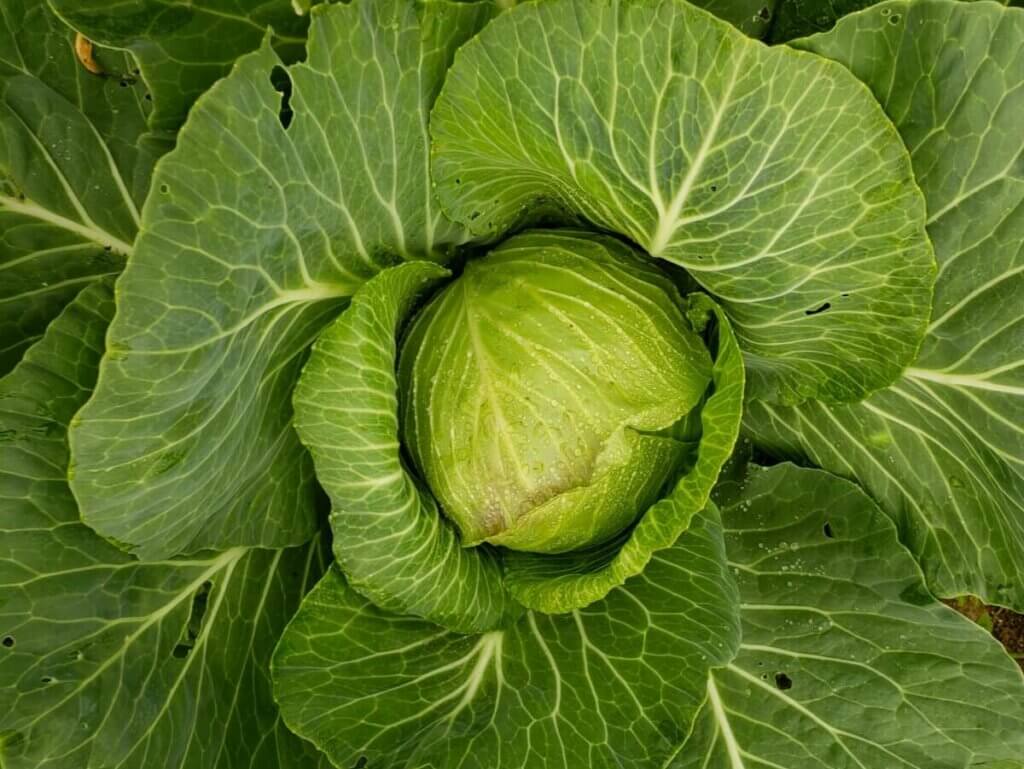
Cabbage
Cabbage is high in nutrients, and it can be stored for a long period of time. It can be grown in the spring and fall but is not always best during the summer. If you deal with extremely hot summers, you’ll want to stick to spring and fall. Or, if you have very mild winters, you can plant it in the fall and grow it over the winter.
A head of cabbage grows quite large and can feed a lot of people. You can also bury your head of cabbage in the ground and store it there like a root cellar.
Fried cabbage with some onions and meat is a great meal! You can also ferment cabbage and make sauerkraut or curtido (Spanish sauerkraut) with just salt and water.

Tomatoes
If I were going to add in a few extra crops to my survival garden the first would be indeterminate tomatoes. You’ll get a harvest off of your tomatoes up until your first frost. I also prefer a paste tomato so they can be preserved into other pantry staples like canned tomatoes, tomato sauce, etc.
Check out these posts I have on growing, harvesting, and preserving tomatoes:
- 10 Tomato Growing Tips for a Disease-Free Harvest
- Preventing Early Tomato Blight (and Potato Blight)
- How to Prune Tomatoes for a Better Harvest
- Weston Tomato Press & Tomato Sauce Recipe
- Storing Green Tomatoes for Fresh Eating
- Water Bath Canning Tomato Sauce
- Homemade Tomato Soup (From the Pantry)
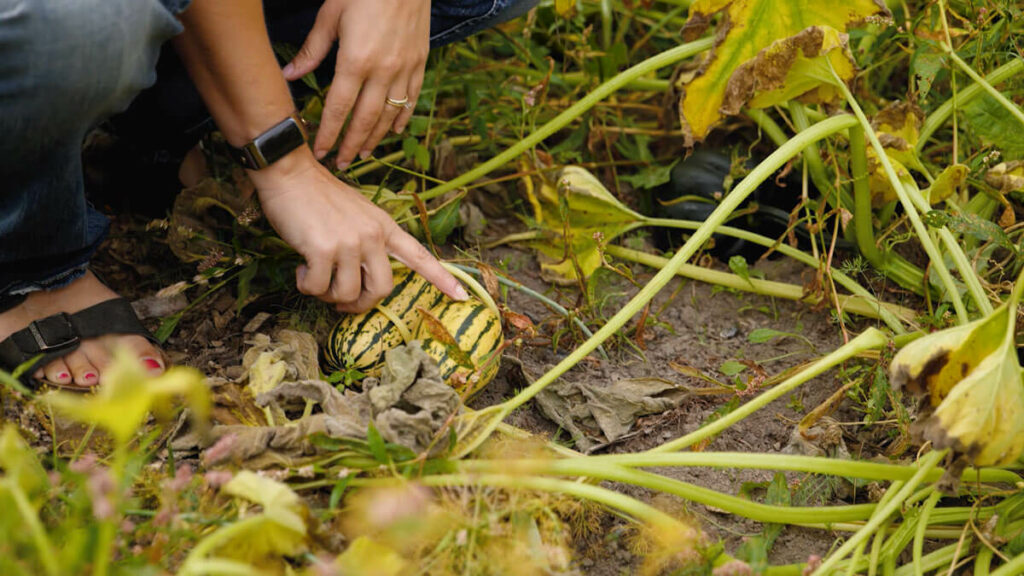
Squash
If you want to grow squash, I highly recommend choosing a winter squash variety. First off, they store well, are calorie dense, and you’ll get a lot of fruit from one seed.
I wouldn’t necessarily recommend summer squash or even cucumbers. Although these are both great crops, and I grow them yearly in my garden, if we’re strictly talking about a survival garden, both summer squash and cucumbers can’t be stored long-term, and they really don’t do well when preserved (save making pickles, of course, but those aren’t really a survival food).
It’s important to know that a squash plant will take up a large amount of space. This is why it’s not at the top of my survival garden list because, if you’re limited in space, this will take up a large portion of it.
A solution to this would be to grow them vertically. This is a great option if you’re limited on space or if you’re looking to create some shaded areas for those shade-loving plants.
When winter squash is cured properly (variety dependent), they will sit on your shelf for 6+ months.
How Do I Start a Self-Sustaining Garden?
If you’re looking to take your gardening skills to the next level, consider coming to my IN-PERSON live workshop here at my home.
The workshop is called, “Grow a Year’s Worth of Food in Your Backyard” and will be held at my home on May 20, 2023. Click here to reserve your spot!
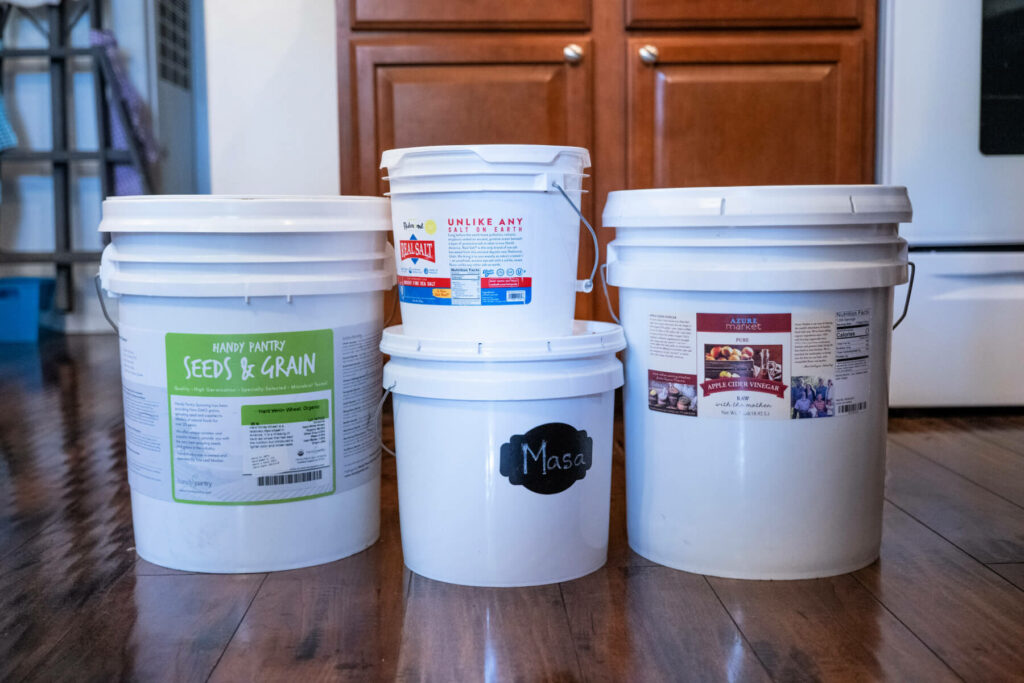
Azure Standard
Many of you have heard me talk about Azure Standard before. They’re my go-to for products that I can’t raise myself. Things like bulk herbs and spices, flour, and many other pantry staples.
However, you may not know they also have a large nursery, and you can order plant starts. I have purchased them many times in the past and have always been extremely pleased with their plants.
If you’re a first-time Azure Standard customer, you can use coupon code “Melissa10” for 10% off your first order of $50 or more.
Verse of the Week: John 10:11-14
Other Posts You May Enjoy
- How to Use a Generator During a Power Outage
- Bug-Out Bags (What You Need to Know)
- Hand Water Well Pump – What You Should Know
[fusebox_transcript]
